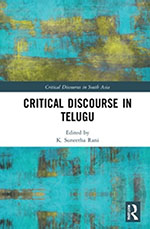‘We are all instinctively bilingual, many of us writing in our own language and in English’, Raja Rao declared, rather assuredly, in his oft-quoted ‘Foreword’ to Kanthapura which became a credo of sorts for postcolonial writing. Born in a Kannada-speaking family, educated in a madrasa in Hyderabad, and having lived a major part of his life in France (and later in the USA), Raja Rao was no doubt more than bilingual, and although he is best known for his writings in English, he did also write in Kannada and French. However, how confidently can we endorse today what Raja Rao wrote in 1938? We take our bilingualism so much for granted that we rarely examine what it really means to be bilingual, or how it is different from being monolingual. What do we do in/with our bilingualism that is different from and better than what is done in/with monolingualism? It may be disconcerting to note that according to the latest census of 2011, only 26% of Indians are bilingual, and only 7% are trilingual. Even these figures may relate to people who ‘know’ the languages rather than use them. But what does ‘knowing’ mean other than speaking and understanding? Do those of us who claim to know more than one language at least read what is written in those languages, let alone write or think in them?
June 2024, volume 48, No 6

